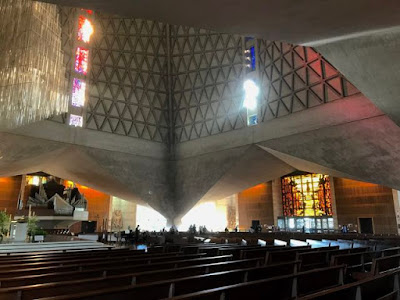But I'm going to add to it a Twitter Thread by Seth Abramson:
For those who keep a healthy distance from the various social media outlets like Twitter, a thread is a string of tweets all tied together. It's a way to get past the character limit of tweets. Abramson is the author of Proof of Collusion. It's a book that pulls together all the media sources to spell out Trump's activities relating to Russia, before and after he became a candidate. It also gives lots of background on who all the players are.
This Thread is Abramson's response to the Ex-Acting FBI director McCabe's 60 Minutes interview. Abramson is just a really smart guy who, among other qualifications, graduated from Harvard Law School and practiced as a prosecutor for a while.
So I'm going to highlight a couple of the tweets in the thread. You can see the whole thread at the link above.
The rogue FBI agents in New York and NYPD, who threatened to leak info about the Clinton emails if Comey didn't go public and who leaked info to the Trump campaign, and whether Trump knew about them (he did.)
3/ I've written of how these rogue agents, in conjunction with rogue NYPD officers—including, it appears, the man running the Weiner investigation, who donated to Trump's campaign in October 2016—leaked false info and/or coordinated false leaks with top Trump adviser Erik Prince.
4/ The question has always been how much Trump knew of what his advisers Giuliani, Prince, and DiGenova were doing to make contact with rogue FBI and NYPD officials, facilitate their illegal pre-election leaks to media, and use those leaks and a threat of more to blackmail Comey.
5/ This was critical because those illegal leaks were, per IG Horowitz, a major consideration in Comey reopening Clinton's case—a decision that, per polling data, gave Trump the presidential election. If Trump knew of these crimes, he was part of a conspiracy that made him POTUS.
6/ In the first minute of CBS's interview, McCabe reveals that Trump *was aware* of a bloc of FBI agents who'd been secretly working against Comey—we now know, by illegally leaking false information about the Clinton case to the media through Trump advisers—and said so to McCabe.
7/ "I heard that you were part of the Resistance," President Trump said to Acting FBI Director Andy McCabe. Trump went on to explain that he knew of a bloc of FBI agents who "did not support Jim Comey...[who] didn't agree with him, and the decisions he made in the Clinton case."
Rosenstein's offer to wear a wire when he talked with the president.
37/ When Rosenstein "absolutely serious[ly]" volunteered, *twice*, to wear a wire into the Oval, it was shocking in its novelty but not its investigative sense. If indeed the FBI had an active counterintel probe open then, which it did, a wire would be *one* investigative method.
38/ Anyone shocked by more than the historic novelty of the act Rosenstein described—who cannot see its investigative sense—simply does not understand or has refused to process how historically serious it is when the FBI and DOJ determine a POTUS could be a witting foreign agent.
39/ If there's one thing *every person America must accept* as a condition of citizenship it's that our Constitution *is* the document from which our laws emanate. *Any* person in the Oval who's a foreign agent *must* be removed *immediately* by impeachment or the 25th Amendment.
Why they didn't invoke the 25th Amendment?
78/ So when DOJ says there's "no basis" to use the 25th, it's saying that until its Russia probe concludes, it is the finding of Main Justice (*and*, I would note, of *McCabe also*) that the threat from Trump is not *so* imminent that the investigation can't be allowed to finish.Trump has no such scruples about calling something an emergency.
79/ And—follow me—once you've said that the potential national security threat is *not* so imminent the investigation can't finish, you're *also* saying that the appropriate remedy once it's finished, if malfeasance is found, is impeachment not the 25th. That's all DOJ is saying.
Here he discusses McCabe's comment that Trump said he believed Putin over his own intelligence agencies.
81/ So now we come to the scariest part of the McCabe interview—a discussion of which will close this thread. McCabe reveals to CBS that Trump said he believed *Russian intelligence* on North Korea's nuclear capabilities over U.S. intelligence.
That's a national security threat.
82/ Those who say McCabe's statement on what Trump said in a security briefing isn't credible are—excuse me, I don't know how to say this politely—not living in the reality the rest of us are. Trump has *repeatedly* and *publicly* accepted the Kremlin line over U.S. intelligence.
83/ Indeed, McCabe's statement that Trump said "I believe Putin" when confronted with intel that North Korea is still a significant national security risk for America—dismissing what his own intelligence was telling him—is so consistent for Trump it bolsters McCabe's credibility.
Here's a link to the 60 Minutes Interview: Andrew McCabe: The full 60 Minutes interview.
If you are represented by a Republican US Senator, contact that Senator and ask how s/he continues to tolerate in office a president who believes Vladimir Putin over his own intelligence agencies. It's easy to send emails to US Senators. Just go to this link. The more they hear, the harder it will be to continue to let this disaster continue.
Think about the investigations the Republican Congress pursued with so much less justification.






















